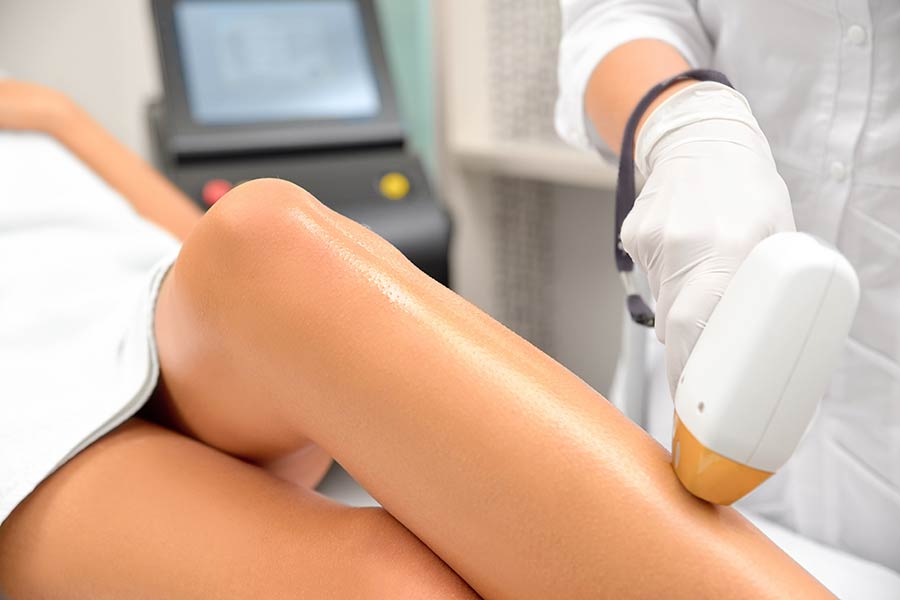Long before the sleek laser machines and clinics offering "laser hair removal near me," people have been finding ways to remove unwanted hair. From the ancient Egyptians with their beeswax and sugar-based concoctions to the Romans with their pumice stones, the quest for smooth skin is nothing new. Fast forward to today, and we've swapped out these primitive methods for something far more efficient and less painful: laser hair removal. It's a game-changer for anyone fed up with traditional shaving, waxing, or plucking. With just a few sessions, you can say goodbye to unwanted hair and hello to smooth skin, all without leaving your neighborhood.
Key Takeaways
- Laser hair removal offers a long-term solution for unwanted hair, with many finding it more effective than traditional methods like shaving or waxing.
- Choosing the right provider is crucial; look for licensed professionals with good reviews and experience in laser treatments to ensure safety and effectiveness.
- Preparation is key; follow your provider's guidelines on avoiding certain medications and sun exposure before your session for the best results.
- Understanding the procedure can help ease any anxiety. It's generally quick, with some discomfort, but many find it manageable.
- Aftercare is simple but important; protect your skin from the sun and follow any specific instructions from your provider to support healing and maximize results.
- Evaluating success takes time; multiple sessions are often needed for optimal results, and patience is key as you work with your provider to achieve your desired outcome.
Understanding Laser Hair Removal
How It Works
Laser hair removal targets hair follicles directly. A laser emits a light that the pigment in your hair absorbs. This process damages the follicle, slowing down hair growth. Because the laser targets melanin, the dark pigment in your hair, this method works best on a contrast between dark hair and lighter skin.
However, multiple sessions are needed for full effectiveness. This is because hair grows in cycles, and not all hairs are in the same phase at once. Typically, clients see significant results after several treatments spaced a few weeks apart.
Types of Lasers
There are several types of lasers used in hair removal:
- Alexandrite: Great for lighter skin tones.
- Diode: Versatile, works on different skin tones.
- Nd:YAG: Best for darker skin tones due to its longer wavelength.
Different lasers suit different skin tones and hair colors. The Alexandrite laser is fast and effective for those with lighter skin, while the Nd:YAG offers safer options for darker skin by minimizing risks of burns or pigmentation changes. Choosing the right type of laser is crucial for both safety and efficiency.
Benefits Over Other Methods
Lasers offer precision that other methods can't match. They target hairs without harming surrounding skin. This precision reduces risks of irritation or damage seen with shaving or waxing.
Over time, laser hair removal can be more cost-effective than continuous shaving or waxing. It also significantly reduces ingrown hairs, leading to smoother skin. These benefits make it a preferred choice for many seeking long-term solutions.
Effectiveness for Flawless Skin
Laser treatments contribute to a smoother skin texture over time. With each session, less hair grows back, reducing maintenance needs significantly. Many people experience permanent hair reduction after consistent treatments.
The potential for permanent reduction is a major draw for those looking to simplify their beauty routines. While individual results vary, the promise of smooth, nearly maintenance-free skin is appealing.
Choosing the Right Provider
Factors to Consider
Experience
Your first session of laser hair removal can be a mix of excitement and nervousness. A skilled technician will make you feel at ease, explaining each step as they go. They assess your skin and hair type to customize the treatment. Comfort is key, so expect cooling devices to soothe your skin during the process. This initial consultation is crucial for a tailored experience.
Technology Used
Laser technology has come a long way, offering safer and more effective treatments. Technicians use different wavelengths to match various skin types and hair colors. FDA-approved devices are a mark of quality and safety you should look for. These advancements mean better results with fewer risks.
Customer Reviews
Listening to others' experiences can guide your choice. Many praise the manageable discomfort and impressive results of laser hair removal. Look for comments on professionalism and cleanliness in customer testimonials. Satisfied customers often share their positive long-term outcomes, which can help set realistic expectations.
Importance of Safety Protocols
Safety comes first in laser hair removal. Following pre-treatment and post-treatment guidelines minimizes side effects. Qualified technicians undergo specific training and certification to ensure your well-being. A thorough consultation helps identify any reasons you should avoid laser treatment, keeping you safe.
Locating Services Nearby
Finding a reputable clinic nearby involves some research. Use online directories and search engines for options. Recommendations from friends or family who've had laser hair removal are invaluable. Always check for certifications and read reviews to understand the quality of local services.
Preparing for Your Session
Before the Appointment
To ensure your laser hair removal session is as effective as possible, there are a few key steps to take. Avoid sun exposure and tanning beds for at least two weeks before your appointment. This reduces skin sensitivity and minimizes the risk of side effects.
It's also crucial not to wax or pluck hairs in the area you're getting treated. The laser targets the root of the hair, which needs to be intact. However, shaving is recommended. Shave the area the day before your session. This helps the laser reach the hair follicles more easily.
What to Wear
On the day of your laser hair removal appointment, choosing what to wear is more important than you might think. Wear loose, comfortable clothing that won't irritate your skin after treatment. If possible, pick clothes that give easy access to the treatment area or can be easily adjusted.
etimes, it's wise to bring a change of clothes, especially if fabric from tight or synthetic materials could rub against the treated area and cause discomfort.
Skin Care Tips
After your laser hair removal session, taking care of your skin is vital for healing and achieving the best results. Moisturize regularly with a gentle lotion to help soothe and hydrate your skin.
Always use sunscreen with high SPF on any treated areas exposed to sunlight. This protects your skin from UV damage and prevents complications post-treatment. For cleansing, opt for gentle, non-abrasive cleansers that won't irritate sensitive skin.
During the Procedure
What to Expect
After you've prepared for your session, it's time to understand what happens during the procedure. You'll check in and be led to a treatment room. The specialist will then prepare the laser equipment based on your skin type and hair color.
You might feel a slight discomfort during the process. It's common to experience a warm sensation. After, the treated area may look red or swollen. This is normal.
Don't expect all hair to disappear after one session. Most people need multiple treatments. The number varies based on hair thickness and growth cycle.
Pain Management
To ease any discomfort, topical numbing creams are often applied before starting. These help make the procedure more comfortable.
Cooling systems or ice packs can also be used right after to soothe the skin. The discomfort is usually mild. Many compare it to the snap of a rubber band against the skin.
Duration of Session
The time it takes for each session depends on how large the area being treated is. Small areas like the upper lip might take just a few minutes. Larger areas, such as the back, could require up to an hour.
Thanks to modern technology, lasers work quickly on small areas. For effective results, sessions are scheduled several weeks apart. This timing matches hair growth cycles well.
Aftercare and Maintenance
Immediate Aftercare
After your laser hair removal session, immediate aftercare is crucial. It helps in reducing discomfort and ensures the treated area heals properly. Applying ice or aloe vera gel can soothe any irritation you might feel. These natural remedies are gentle on the skin and provide immediate relief.
You should also keep the treated area away from direct sunlight and heat sources for a few days. Sunlight can cause damage and prolong the healing process. Similarly, avoid strenuous exercise for at least 24 hours. Exercise causes sweating, which might irritate the sensitive skin.
Long-term Skin Care
To maintain smooth, healthy skin after laser hair removal, incorporate gentle exfoliation into your skincare routine. Exfoliation helps to prevent ingrown hairs as your skin sheds dead cells. This step is essential as it ensures that new hair grows back without any issues.
Always use sunscreen on the treated areas. Sunscreen protects your skin from hyperpigmentation, keeping your results looking flawless. Hydration is key, both internally by drinking plenty of water and externally by moisturizing regularly. This habit keeps your skin in optimal condition, enhancing the effects of your treatment.
When to Schedule Follow-ups
Adhering to a treatment schedule tailored to your individual hair growth cycles maximizes the effectiveness of laser hair removal. Typically, follow-up appointments should be every 4-6 weeks for facial areas and 6-8 weeks for body areas. This timing allows for targeting hair at its most vulnerable growth stage.
After completing the initial treatment plan, you may need maintenance sessions once or twice a year. These sessions ensure that any new hair growth is managed effectively, maintaining your smooth skin over time.
Evaluating Treatment Success
Expected Results
Results from laser hair removal can differ greatly. They depend on your hair's color and type, plus where on your body you're getting treated. Most people see a significant reduction in hair growth. This doesn't happen all at once, though.
Hair becomes less dense and thinner as you go through more treatments. It's a gradual change. Some lucky folks might get close to never seeing their hair again in treated areas. Yet, many need to come back for touch-ups now and then.
Timeline for Results
Don't expect to see big changes overnight. After 2-3 sessions, you'll start noticing less hair. But to really get the best results, plan for 6-8 sessions. This depends on what parts of the body we're talking about and how your hair is like.
The full effect, including smoother skin and much less hair, shows up a few weeks after your last appointment. It takes patience but is worth it.
Handling Side Effects
Yes, there are side effects, but they're usually not too bad. Redness, some swelling, and feeling uncomfortable are common right after treatment. These issues should go away quickly, within a few hours or days.
If something more serious happens—like blistering or your skin color changing—that's when you should talk to a doctor. And if anything feels off after treatment, getting in touch with the place that did your laser hair removal is a smart move. They can help figure out what's going on and how to deal with it.
Comparing Hair Removal Methods
Laser vs. Shaving
Shaving cuts hair at the skin's surface. It's quick but the results last only a few days. You need to do it often to keep skin smooth.
Shaving can cause cuts and razor burn. Ingrown hairs are also common. These issues make shaving less appealing for many.
Laser hair removal offers a different experience. It reduces hair growth over time, leading to longer-lasting smoothness. This method helps avoid the frequent maintenance shaving requires.
Laser vs. Waxing
Waxing pulls hair out from the root. It hurts more than shaving. Skin irritation is also a risk after waxing.
Before you can wax, your hair must be long enough. This waiting period can be inconvenient for those who prefer continuous smoothness.
Laser treatments target the hair root too but without the pain of waxing. They provide longer-term results by reducing hair regrowth significantly.
Laser vs. Electrolysis
Electrolysis is another permanent solution for removing hair. It treats each hair individually, which makes it very time-consuming for large areas.
Treating big parts of your body with electrolysis can take many sessions over months or even years. This makes it less practical for those seeking quicker results.
Laser hair removal is better suited for larger areas due to its faster session times and ability to treat many hairs at once.
Cost Considerations
Average Pricing
Laser hair removal prices vary widely. They depend on the size of the area being treated and where you live. For small areas like the upper lip, costs might start at $100 per session. Larger areas like the back could be over $600 per session. Cities with a higher cost of living usually have higher prices for these services.
The upfront cost might seem steep. But, long-term savings are significant compared to waxing or shaving. It's wise to shop around. Consult with several clinics to compare their pricing and package deals.
Packages and Deals
Clinics often offer package deals. These can significantly reduce the overall cost if you commit to multiple sessions upfront. It's also common to find seasonal promotions or discounts for first-time clients. These can make treatments more affordable.
Don't hesitate to ask about payment plans or financing options, especially for more expensive treatments. This way, you can manage the costs without breaking the bank.
Insurance Coverage
Most insurance plans see laser hair removal as a cosmetic procedure. So, they don't cover it. However, it's worth checking with your provider for any exceptions, especially if there's a medical necessity behind your decision.
For those who have them, using Health Savings Accounts (HSAs) or Flexible Spending Accounts (FSAs) can be a smart way to cover some of the costs with pre-tax dollars.
Personal Stories and Reviews
Success Stories
Many clients have seen dramatic changes in their lives thanks to laser hair removal. One person shared how they no longer struggle with painful ingrown hairs. This was a big relief. Another said the procedure saved them both time and money spent on regular waxing appointments.
A remarkable story comes from someone who used to spend hours each week managing unwanted hair. After completing their laser hair removal sessions, they found an incredible boost in self-confidence. They now enjoy a life free from the constant worry about visible hair.
Before and After Photos
Before and after photos play a crucial role in setting expectations. They show clear results from the initial session to the last one. These photos are powerful because they reveal real, tangible changes.
It's important for potential clients to see these transformations. They help people understand what laser hair removal can achieve. Photos also showcase success across various skin types and hair colors, proving its effectiveness for almost anyone.
Client Testimonials
Clients often praise the professionalism of staff and the pristine condition of facilities. One testimonial highlighted how staff made them feel at ease, explaining every step of the process. This reassurance is valuable for first-timers who might be nervous.
Pain management is another area where many facilities excel. Clients appreciate when their comfort is prioritized during treatments. "I barely felt a thing," said one happy customer, relieved by the gentle approach to what they feared would be a painful process.
Long-term satisfaction is a common theme in testimonials. Many share stories of significant hair reduction that lasts years after treatment, emphasizing how it was worth every penny.
Summary
ou've cruised through the ins and outs of zapping away unwanted hair. From picking the perfect pro to handling the zap session like a champ, and even keeping those silky results lasting longer, you're now in the know. Whether it's comparing your options or crunching the cost, you've got the scoop. And hey, those real-deal stories probably gave you some solid feels about what to expect.
Now's your moment! Don't just sit on this goldmine of info. Dive in, pick your laser guru, and get ready to say bye-bye to that pesky hair for good. Remember, smooth skin isn't just a dream—it's your next move. So, what are you waiting for? Let's get lasering!
Frequently Asked Questions
How do I pick the right laser hair removal provider?
Look for a provider with certified expertise, positive reviews, and a clean, professional environment. It's like choosing a good mechanic but for your skin!
What should I do to prepare for my laser hair removal session?
Shave the area 24 hours before your appointment, avoid sun exposure, and skip any skincare products on the day. Think of it as prepping your canvas for a masterpiece.
What happens during the laser hair removal procedure?
A specialist will guide a laser over your skin, targeting hair follicles. It's a bit like having tiny rubber bands snapping against your skin, but most find it manageable.
How do I take care of my skin after laser hair removal?
Moisturize well, avoid sun exposure by wearing sunscreen, and steer clear of hot showers for a day or two. Treat your skin like it just had a mini-vacation and needs some R&R.
Can I evaluate the success of my laser hair removal treatment immediately?
Not immediately. Hair growth cycles mean you'll see the full results after all sessions are completed. It's like planting seeds; you need patience before you see the garden bloom.
How does laser hair removal compare to other methods?
Laser offers longer-lasting results compared to shaving or waxing. Imagine mowing the lawn once every few weeks versus every day.
Is laser hair removal expensive?
Costs vary based on area size and session number but think of it as an investment in saving time and avoiding daily hassle in the future.












